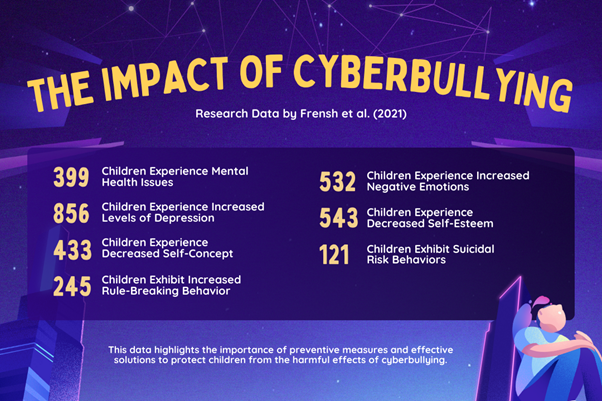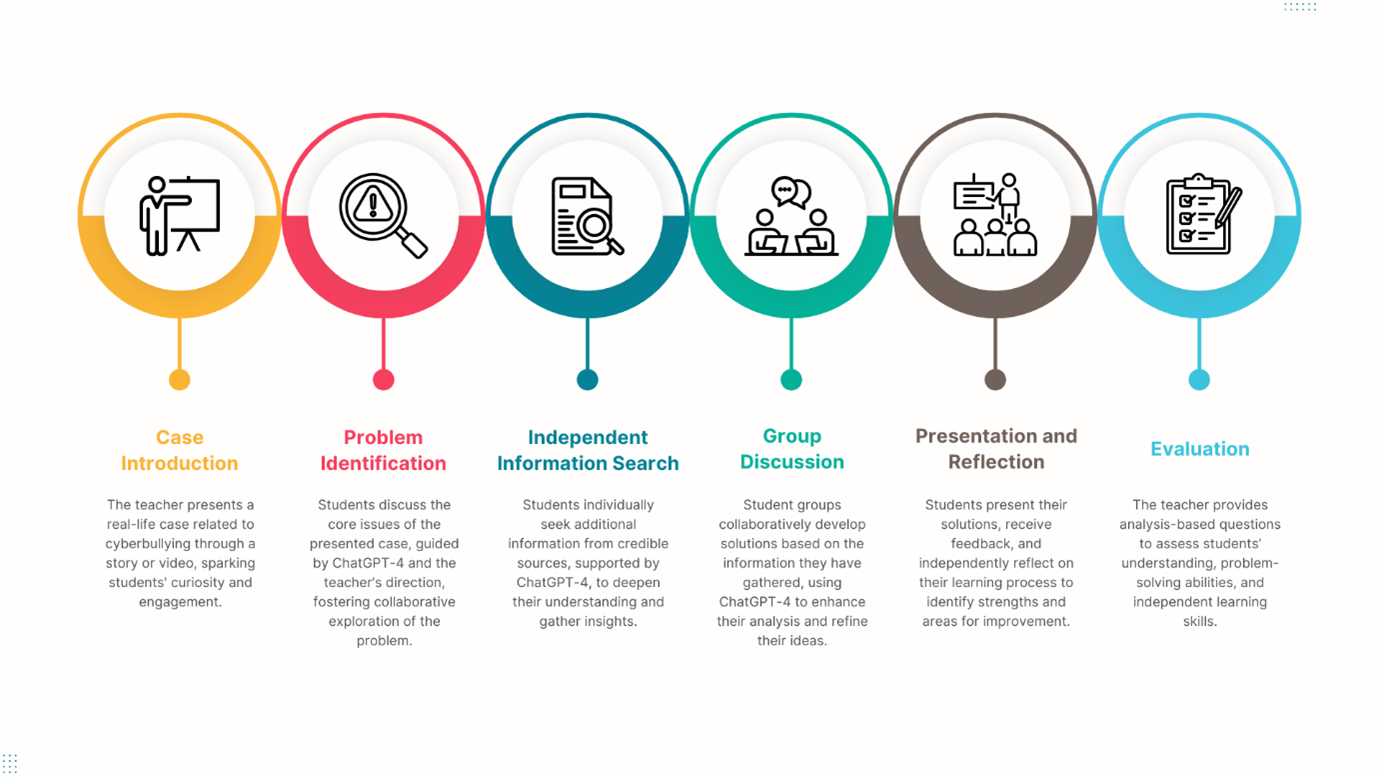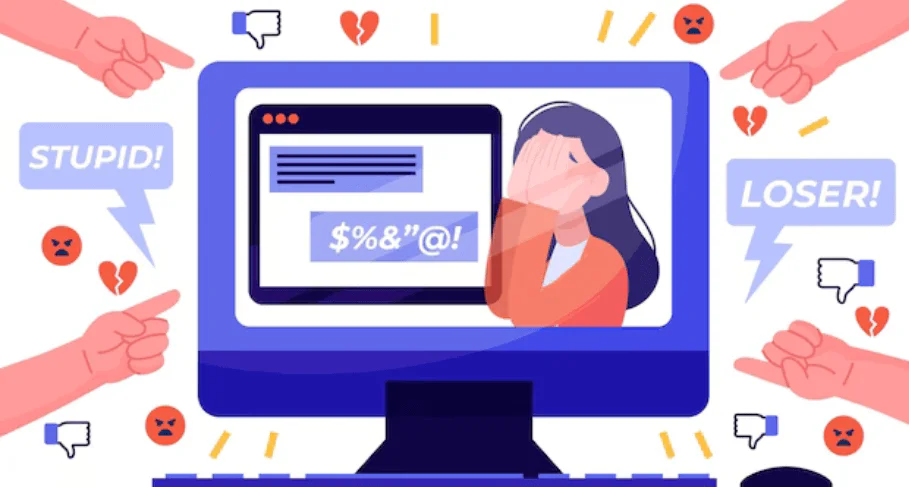Why Should Cyberbullying Be Addressed Seriously?
In the digital era, cyberbullying has emerged as one of the most significant challenges threatening the education sector. This phenomenon is far from being mere online teasing—it represents repeated, intentional acts of harassment targeting individuals who are socially or psychologically vulnerable. And the impact? Deeply concerning.
Research reveals that 856 children reported heightened levels of depression due to cyberbullying, while 433 children experienced a significant decline in self-concept. These figures don’t even account for long-term effects, such as social anxiety or emotional disorders. Our younger generation is under immense pressure, and now, more than ever, we need real solutions to tackle this growing issue.
Case-based learning (CBL) is gaining prominence as a learning model that analyses real-world cases. Combined with cutting-edge technology like ChatGPT-4, this learning model becomes more than just an innovation—it represents a transformative opportunity in education.
CBL equips students with problem-solving skills by engaging them in real-life scenarios, while ChatGPT-4 acts as a digital facilitator, offering interactive guidance and fostering self-directed learning. The outcome? Enhanced independence, sharpened critical thinking skills, and students better prepared to tackle real-world challenges.
By leveraging technology and adopting relevant learning models, we can ensure that future generations survive and thrive amidst the challenges of the digital era. The question is: What’s our next step to support them?

CBL: A Learning Model That Sharpens Real-World Solutions
Case-based learning (CBL) is not just another learning model—it’s a gateway for students to immerse themselves in the real world through the analysis and resolution of actual cases. Research has shown that this model significantly enhances students’ independence and problem-solving skills.
What sets CBL apart? Students go beyond merely understanding theories in textbooks; they actively apply them to solve complex challenges. For instance, in tackling the topic of cyberbullying, students can explore its impacts through case studies, analyze root causes, and develop relevant, practical solutions.
CBL also fosters active engagement, critical thinking, and collaboration among students. The scenarios are designed to be relatable to their everyday lives, transforming education into a meaningful and impactful experience.
With CBL, we’re not just cultivating intelligent students; we’re shaping a generation equipped to face real-world challenges. Are we ready to bring this transformative model to more classrooms?
ChatGPT-4: A Digital Facilitator in the CBL Model
ChatGPT-4 is revolutionizing education with its advanced generative pre-trained transformer technology. This cutting-edge tool comprehends context, provides interactive responses, and supports students in independently exploring materials. Beyond facilitating learning, ChatGPT-4 enhances analytical and critical thinking skills—two essential competencies in the digital age.
In the Case-Based Learning (CBL) model, ChatGPT-4 acts as a digital facilitator, supporting students throughout each stage of the learning process:
Case Introduction
Teachers present real-world cases, such as the spread of harmful information on social media. A short story or video captures students’ curiosity. ChatGPT-4 enriches this phase by providing additional illustrations or answering students’ initial questions, making the learning experience more interactive.
Problem Identification
In small groups, students discuss the core issues—such as the social and emotional impact of cyberbullying. With ChatGPT-4, students gain deeper insights, while teachers offer guiding questions to steer the discussion.
Independent Information Search
Individually, students seek additional information, such as legal regulations surrounding cyberbullying, from credible sources. ChatGPT-4 is a digital facilitator who delivers interactive information to enhance students’ exploration.
Group Discussion
After searching data, students share their findings and collaborate to develop comprehensive solutions. ChatGPT-4 supports deeper analysis, making the resulting solutions richer and more focused.
Presentation and Reflection
Each group presents their solutions, receiving feedback from peers and teachers. Individual reflection follows, supported by ChatGPT-4, allowing students to analyze the strengths and weaknesses of their learning process.
Evaluation
Teachers provide an analysis-based evaluation to measure students’ understanding of the discussed case, as well as their independence and problem-solving skills.

Positive Impacts on Independent Learning and Problem-Solving
Integrating Case-Based Learning (CBL) with the advanced technology of ChatGPT-4 delivers significant benefits for student development. Here are two key aspects that stand out:
Independent Learning
With the support of ChatGPT-4, students are encouraged to learn independently and guided to design effective learning strategies. This technology provides relevant and personalized feedback, helping students grasp material at their own pace and based on their needs. The result? Increased self-confidence accompanied by improved information management skills.
Problem-Solving Skills
In case-based learning, students are trained to think critically, analyze situations, and devise real-world solutions. The presence of ChatGPT-4 enhances this process by providing clear direction. Interactive resources and step-by-step guidance enable students to explore information in a richer and more structured manner.
This integration is more than just innovation; it is a leap forward toward relevant and meaningful learning in the digital era. Are we ready to adopt this transformative learning model on a broader scale?
Conclusion
Addressing education’s challenges in the digital era requires innovative and visionary breakthroughs. Implementing Case-Based Learning (CBL) assisted by ChatGPT-4 emerges as a tangible solution, particularly for pressing issues such as cyberbullying. This learning model offers a more inclusive, interactive, problem-solving educational experience.
This is the moment for schools and educators to embrace transformation, creating meaningful learning environments that empower the younger generation to face global realities with confidence and resilience.


